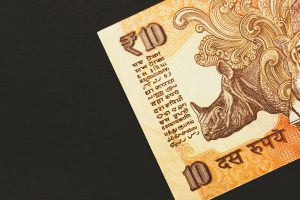Price action trading is a popular method used by traders to analyze the price movement of a financial instrument. In forex trading, price action analysis can be very effective in identifying potential trade setups and making informed trading decisions. In this article, we will explain how to trade price action in forex.
What is price action trading?
Price action trading is a method of analyzing the price movement of a financial instrument without the use of indicators. Instead, traders use candlestick patterns, chart patterns, and other technical analysis tools to identify potential trade setups.
Price action traders believe that the price action of a financial instrument reflects all the information that is available in the market. Therefore, they focus on analyzing the price movement to identify trading opportunities.
Price action analysis involves identifying key levels of support and resistance, trend lines, and chart patterns. Traders use this information to make informed trading decisions and enter and exit trades at the right time.
Key elements of price action trading
There are several key elements of price action trading that traders need to understand before they start trading. These include:
1. Candlestick patterns
Candlestick patterns are a visual representation of the price movement of a financial instrument over a period of time. There are numerous candlestick patterns that traders use to identify potential trade setups, including doji, engulfing, and hammer patterns.
2. Support and resistance levels
Support and resistance levels are key levels on a chart where the price has previously reversed. Traders use these levels to identify potential trade setups and to place their stop-loss orders.
3. Trend lines
Trend lines are diagonal lines that connect two or more price points on a chart. Traders use trend lines to identify the direction of the trend and to enter and exit trades.
4. Chart patterns
Chart patterns are formations that traders use to identify potential trade setups. These patterns include head and shoulders, triangles, and double tops and bottoms.
How to trade price action in forex
To trade price action in forex, traders need to follow a few simple steps:
Step 1: Identify the trend
The first step in price action trading is to identify the trend. Traders can use trend lines, moving averages, and other technical analysis tools to identify the direction of the trend.
Step 2: Identify key levels of support and resistance
Once the trend has been identified, traders need to identify key levels of support and resistance. These levels can be used to enter and exit trades and to place stop-loss orders.
Step 3: Look for chart patterns
Traders should also look for chart patterns to identify potential trade setups. These patterns can be used to enter and exit trades and to place stop-loss orders.
Step 4: Use candlestick patterns to confirm trades
Candlestick patterns can be used to confirm potential trade setups. Traders should look for bullish or bearish candlestick patterns to confirm the direction of the trade.
Step 5: Place trades and manage risk
Once a trade setup has been identified, traders should place their trades and manage their risk. Traders should use stop-loss orders to limit their losses and take-profit orders to lock in their profits.
Conclusion
Price action trading is a popular method used by traders to analyze the price movement of a financial instrument. In forex trading, price action analysis can be very effective in identifying potential trade setups and making informed trading decisions. Traders should focus on identifying the trend, key levels of support and resistance, chart patterns, and candlestick patterns to make profitable trades. It is important to manage risk and to use stop-loss and take-profit orders to limit losses and lock in profits.





